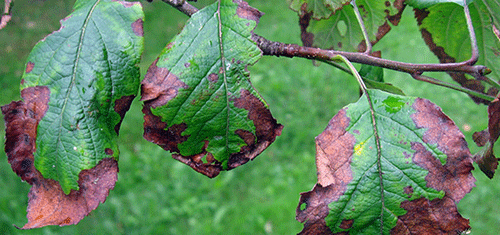Hanks Saisai
Where crop production is practised and/or grown, there is a likelihood of disease outbreaks that can cause serious damage to all crops resulting in severe financial losses.
Parasitic diseases are normally caused by the activities of microscopic organisms such as fungi, bacteria, and viruses. Whereas, non-parasitic diseases are caused by unfavourable soil and climatic conditions resulting in the abnormal development of the foliage, fruits, tubers and roots. Parasitic diseases are classified into the following categories:
Fungal diseases
Fungal diseases are parasitic organisms that belong to the group of Eukaryotic Organisms, and they usually reproduce by producing spores that are easily distributed by wind and water. Late blight, early blight, and mildew are some of the most common fungal diseases that occur in tomatoes or potatoes. These diseases are caused by prolonged overcast weather conditions that are associated with warm weather and high relative humidity.
These are favourable conditions for fungal microorganisms to thrive and rapidly reproduce spores on the leaves and branches of crops. This in return has an effect on the growth of crops and usually results in retarded growth and lower yield potential. Another fungal disease is Septoria Leaf Spot, which is also caused by prolonged overcast conditions, warm weather and high relative humidity.
To control the occurrence of fungal diseases such as early or late blight, there are certain practices that a crop farmer can incorporate into primary production. When planting tomatoes, potatoes, carrots, and beans that are usually affected by fungal diseases, it is essential to avoid overcrowding as it promotes the spread of the spores among the plants (allowing rapid spread of the disease).
Bacterial diseases
Bacteria are microscopic single-celled organisms that reproduce by simple fission (or simply breakage). Bacterial diseases in plants usually take on many forms and cause wilting, spotting on the leaves, cankers on the stems and the rotting of roots and tubers. In most cases, bacterial diseases attack the vascular system and cause serious problems.
Black rot is a very common bacterial disease that affects cabbages and is introduced into gardens through seed coats. Bacterial wilt disease of solanaceous crops (tomatoes and potatoes) can be in the soil for many years (at least 4 years) and once it has been allowed to enter the Vascular system (Xylem vessel), it can cause the wilting of crops.
To break the lifecycle of bacterial diseases, farmers are encouraged to practice crop rotation and ensure that crops such as tomatoes and potatoes are not grown in close proximity, as they are susceptible to the same diseases.
Another way is to buy certified seeds that are disease resistant. To ensure no occurrence of these diseases in future, farmers must carefully remove all infected plant material (leaves, roots and fallen leaves) and destroy them by burning.
Viral Diseases
Viruses are infectious agents of minute proportions that usually have a significantly negative effect on crops causing mottling, stunting, crinkling and distortions of the foliage. Usually, viral diseases are spread by gardeners who touch diseased plants and then proceed to touch healthy plants. Pests are some of the agents that spread viral diseases (arphids, mites, white flies & leaf hoppers) by sucking & chewing on diseased plants and transferring microorganisms to healthy plants.
Crop rotation can assist to address the issue of viral diseases and in more severe cases, it is usually wise to simply destroy the crop field by burning all crops. Non-parasitic diseases conventionally result from unfavourable soil and climatic conditions, as well as nutritional deficiencies. Potatoes and tomatoes are usually the most affected crops as well as beetroot and carrots.
Overwatering, dry spells during critical stages of growth and poor soil preparation (under fertilisation, overfertilization and incorrect application of fertilisers) can cause abnormal growth of crops.
-Hanks Saisai is Agribank’s technical advisor, crops and poultry


